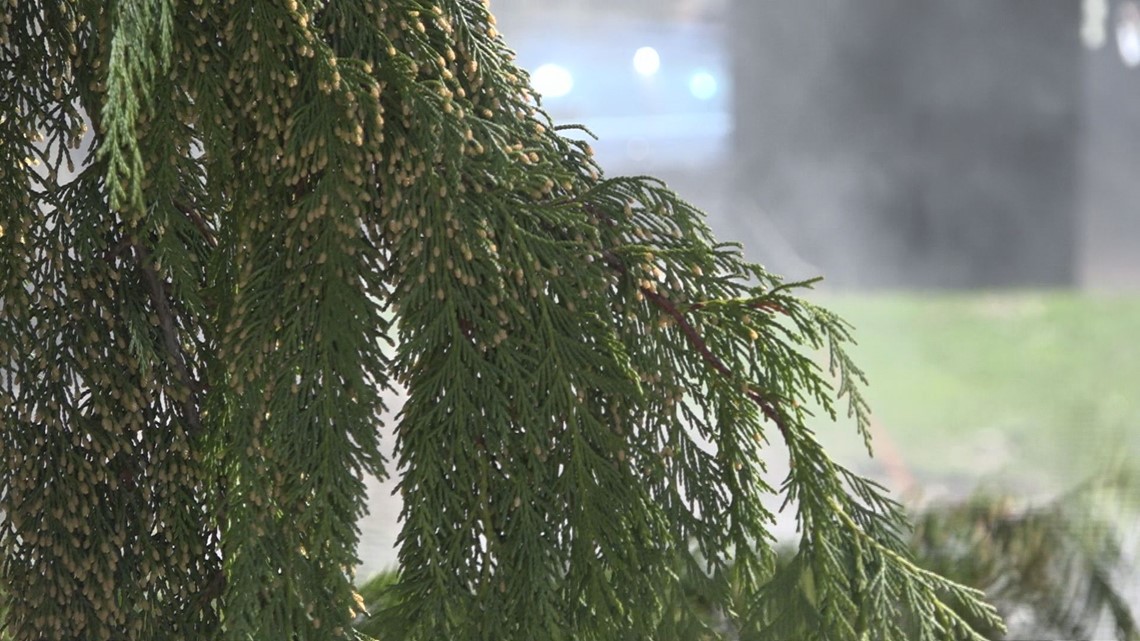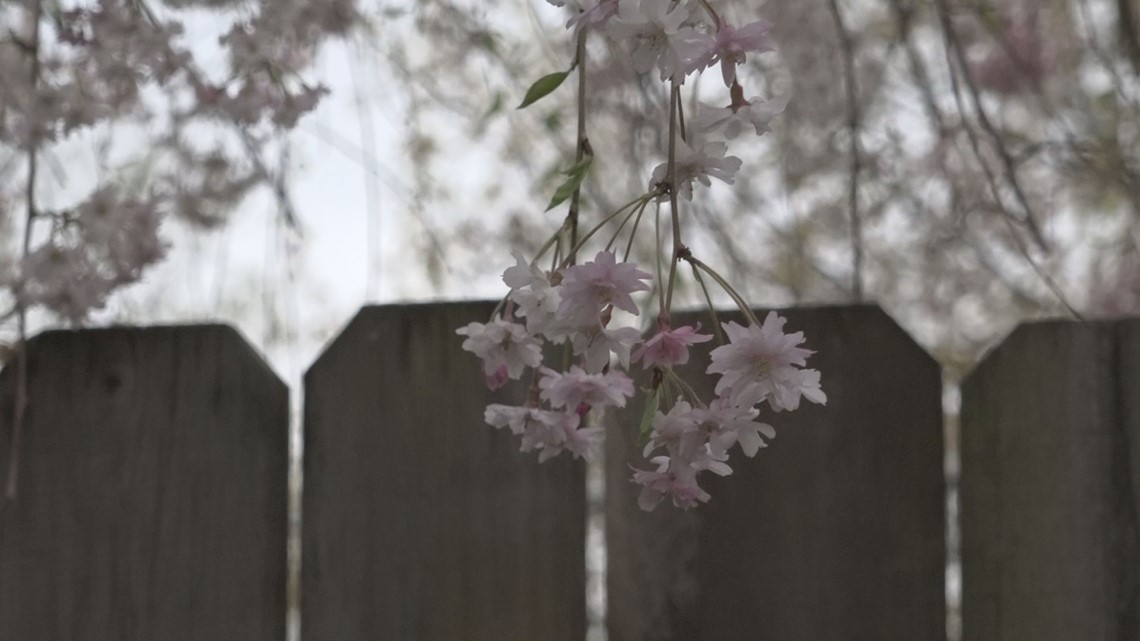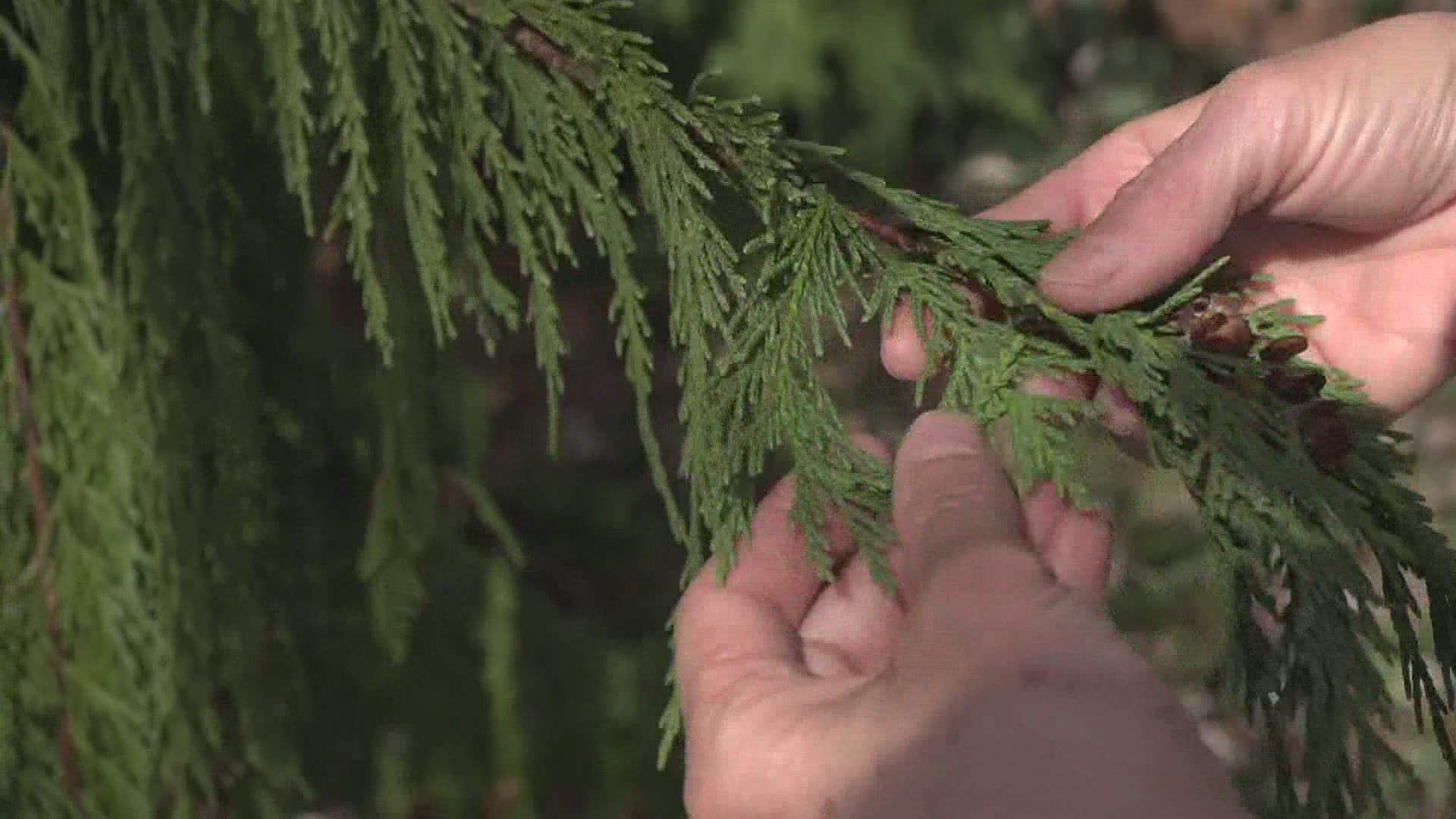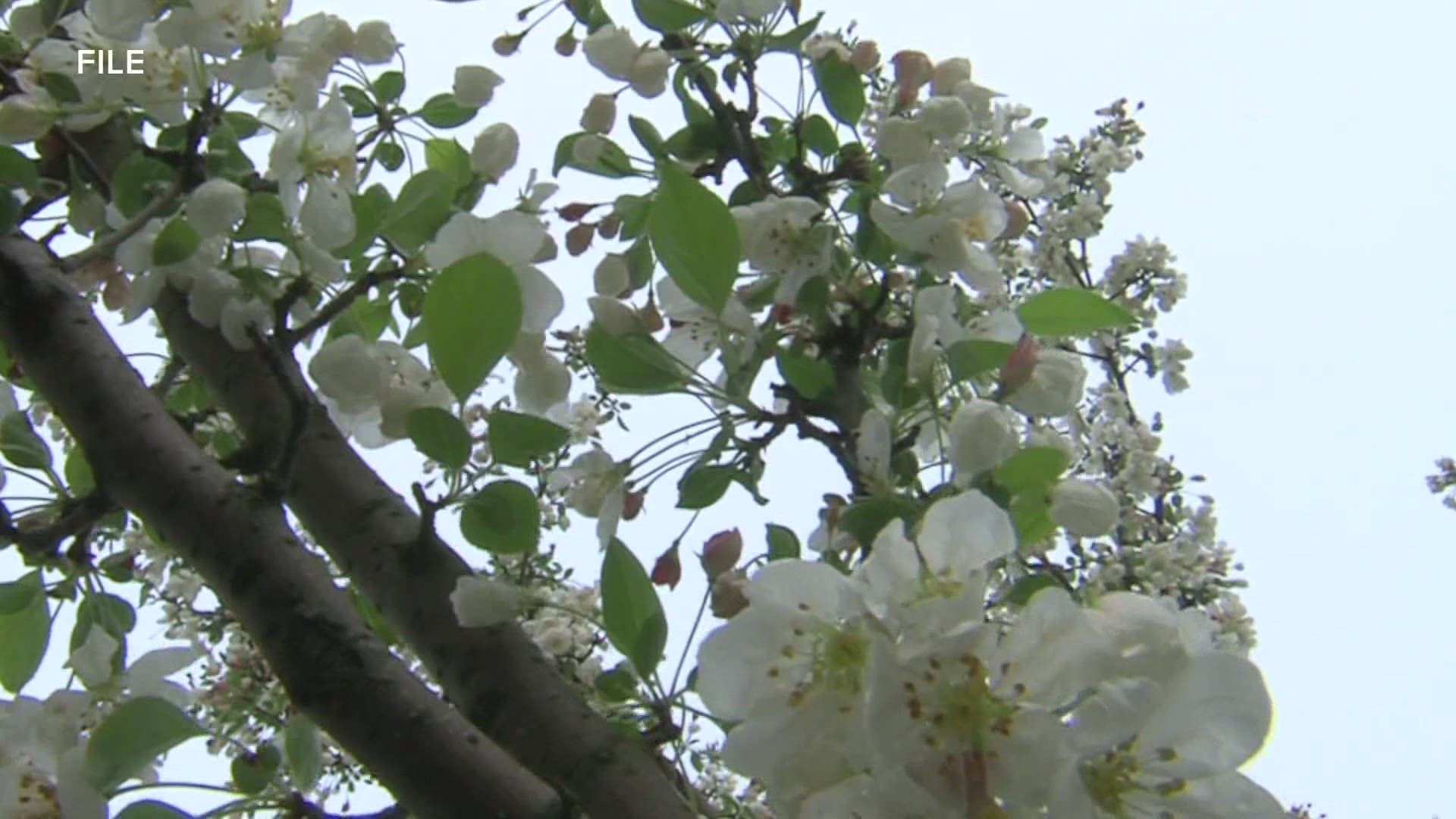MICHIGAN, USA — Every spring, people with allergies dread the runny noses and itchy eyes that come with tree pollen flying through the air.
"Allergic disease is affecting more than 50 million of us in the United States," said Dr. Karyn Gell, an allergist at Grand Rapids Allergy.
Gell said it is the male trees, or male parts of trees, that cause the pollen that affects allergies. These are some of the first buds and pollinating structures to form once warm air begins to move in. The male gamete floats through the air, trying to find a female receptacle for fertilization.
"Allergies and asthma are skyrocketing," said Gell, "and pharmaceutical data is showing sales are doubling, pollen counts are rising, and pollution plays a role in that. There are so many factors that are hard to control, but when we step back and think me, as an individual, could we then look at the allergenic potential of trees and look at the choices?"
Knowing how much the seasonal pollen affects her patients, Gell began to research how to help alleviate the pollen count. She said there may be a way to lighten the pollen count in the air by planting more female trees in urban and residential areas.
"It's a huge problem," said Tom Ogren, an allergy researcher and horticulturist, "And it gets worse every year, and there's something we can do about it."
Ogren spent years creating an allergen scale for many of the plants we see in the U.S. He literally wrote the book on allergy-free gardening. He said many people planting trees in urban areas are only planting male trees and shrubs. That's because they typically produce less fruit to fall on the ground. Or in the case of the ginkgo tree, the female produces a foul, vomit-smelling fruit.
"In horticulture, the female plants are usually seen as inferior," said Ogren, "Where I think that they're superior."
Ogren's work suggest planting more female trees, or other non-pollinating trees, can help reduce allergens in the air.


"Because in nature, you have a balance," said Ogren, "But in the city, there's no balance anymore."
However, not every tree expert is on board with the idea. Bert Cregg, a professor of horticulture and forestry at Michigan State University (MSU) said trying to reduce the pollen count would be like "emptying a bathtub with a teaspoon."
Plus, Cregg said most of the trees we see outside ore monecious, meaning they have both male and female flowers on the same tree. One suggestion he gave for monecious was an oak tree.
"It's unfortunate, and I understand the issue, especially people with asthma, seasonal allergies," said Cregg, "I get seasonal allergies. I know when trees are shedding pollen, trust me. But it's it's part of part of living in this part of the world. It's really hard to avoid."
Cregg said there are some trees that will be difficult to find at a nursery in the female sex, however. One of those being the ginkgo tree, or previously the ash tree.


Instead of focusing on the sex of the tree, Cregg suggests planting more flowering trees, like crabapple or magnolia.
"Those are trees that are going to be insect pollinated," said Cregg, "And so, they're much more efficient. They only need a little pollen to stick to the back of a bee to get to the next thing, versus an oak, or maple, or these things that are going to be wind pollinated."
In Grand Rapids, the City has a list of approved tree species. Joe Sulak is the parks superintendent. He said he's aware of the allergy-free planting research, but called it fairly new. However, he said they do take allergies into consideration while making their approved species list.
While the city does not require male-only trees in most species, Sulak said it often depends on where they are getting the trees to plant.
"I think that's where the selection process comes into play, where those trees are coming from that are planted out in the nursery," said Sulak, "Or those being selected only for males ahead of time. The males produce more power, and that's where the allergy issues come into play. But, I think the more the more knowledgeable we can be about selecting both male and females of dioecious species, it helps balance those out."
Sulak said the only tree they specify to be male-only is the ginkgo tree due to its smelly fruit. Previously, that list included the ash tree.
"But with emerald ash borer, we don't really plant ash trees anymore," said Sulak.
Near Kalamazoo, the Oikos Tree Crop farm specializes in tree diversity. They sell trees and seeds, mostly various fruiting trees. Ken Asmus, the owner, said his customers typically do not specify which sex they would like their trees.
"We don’t really think of people as one or the other, or a few," said Asmus, "but here, you see amazing diversity just in the sexuality, I guess you could call, it for trees."
Asmus echoes Cregg's sentiment about panting more female trees not making a large difference in the pollen count. However, he is a big supporter of planting a diverse range of trees and plants on West Michigan.
"It could be done locally in someone's yard or city, if they chose female plants that don’t produce pollen," said Asmus, "Or possibly types of trees that generally don’t have a lot of pollen. But oaks, there's always a lot of oak pollen and you can't really get away from it. But, in your yard, you could choose some plants that have low pollen counts naturally."


So, planting more female trees or plants may help reduce some of the pollen in a specific location, like a yard. However, the wind pollinating trees will have their pollen carried long distances. Planting more flowering trees could also aid in reducing pollen in a location.
"Pollen will fly for hundreds of miles," said Gell, "So, if you have a dry, windy day, it doesn’t necessarily matter what you have in your own yard. In that, you’re going to have pollen flying from all distances around. However there is some research showing that if you have open windows, and in your yard you have a large amount of pollen right there, it can affect you but it can also affect your own community."
For many, there is not much escape form the seasonal tree pollen allergies. Gell said over-the-counter allergy medicine, especially nasal sprays, work well for most people. For more severe allergies, there are medications a doctor can prescribe.
Gell suggests to limit allergens affecting a person's body, keep windows closed in the spring, clean air duct filters, and take proactive and preventative medications. Steroid nasal sprays and irrigation can also help.
If these things still do not alleviate some allergy symptoms, seek help from a doctor.
"Immunotherapy, we know 80 percent of our patients get 80 percent benefit," said Gell, "When you start retraining your immune system, so you don’t have they allergy anymore, it’s truly lifechanging."
According to the Allergy and Asthma Foundation, here are some allergy-friendly plant options:
- Apple and crab apple trees.
- Magnolia tree.
- Pear tree.
- Female red maple.
- Hibiscus.
- Azalea.
- Geranium.
- Dahlia.
- Roses.
- Tulips.
On the other hand, these are plants to avoid with allergies:
- Ragweed.
- Male ash.
- Male aspen.
- Birch.
- Cedar.
- Male Cottonwood.
- Elm.
- Male maples.
- Male willows.
- Pine.
RELATED VIDEO: Impacts of climate change on allergy season
►Make it easy to keep up to date with more stories like this. Download the 13 ON YOUR SIDE app now.
Have a news tip? Email news@13onyourside.com, visit our Facebook page or Twitter. Subscribe to our YouTube channel.


